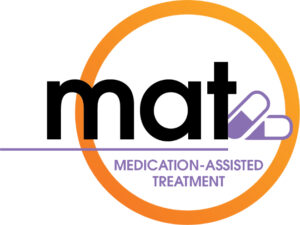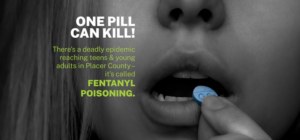Opioid usage and overdose rates in the United States are at all-time highs, with 2021 the highest year on record. One of the main drivers of the crisis in recent years has been fentanyl, an extremely powerful synthetic opioid prescribed for pain management.
Fentanyl is considered 50 times stronger than heroin and 100 times stronger than morphine. Because of its high potential for abuse, it’s classified under Schedule II of the Controlled Substances Act. Yet, despite these tight controls, fentanyl use has become widespread across the country, both due to illegal trafficking as well as overprescription by doctors.
Naturally, California’s experience mirrors national trends, with fentanyl a growing problem in cities such as Sacramento and San Francisco. Though fentanyl is highly addictive, there are treatment options available. Sacramento area residents should know that experienced, compassionate help with addiction is nearby. Monarch Sober Homes offers two complementary services to help clients move forward in their recovery:
- Outpatient treatment at the Monarch Recovery Center in Sacramento
- Sober living homes in Sacramento, Davis, and San Francisco
With proper treatment, recovery from fentanyl addiction is possible.
Read on to learn more.
Is Fentanyl Becoming a Problem in California?
In July 2022, California Border Patrol and DEA agents seized over one million counterfeit pills containing fentanyl. It was the largest seizure of fentanyl in California history to date.
According to data for 2020 (the most recent year available), over 91,000 people nationwide died in 2020 as a result of an overdose of synthetic opioids like fentanyl. Almost 9,000 of those deaths occurred in California.
From 2015 to 2019, the rate of fatal fentanyl overdoses in California increased ten-fold, from 0.3 deaths per 100,000 to 3.8 per 100,000 over the course of four years.
For Sacramento, the number of per-capita fentanyl overdoses is 3.5 per 100,000, and the problem seems to be getting worse.
Deaths from fentanyl overdose in Sacramento rose from 14 in 2018, to 36 in 2019, to 87 in 2020. In 2021, over 100 people died of fentanyl overdose – a higher number than deaths due to homicide.
Fentanyl appears to be increasingly showing up in the circulation of counterfeit pills in Sacramento. According to city officials, 75% of all seized counterfeit pills from January 2020 to July 2021 were laced with fentanyl.
In Sacramento county as a whole, officials estimate that 98% of pills bought on the street contained fentanyl.
Meanwhile, San Francisco is one of the worst affected counties in California, with 38 out of 100,000 deaths occurring from fentanyl.
In fact, San Francisco is one of the leading metropolitan areas for fentanyl-linked overdose deaths. Authorities there say it’s the most common street drug and is especially common in the supplies of cocaine and methamphetamine.
The problem is so bad there that San Francisco officials have begun making fentanyl test strips freely available, so users can test the drugs they’re buying for fentanyl.
Symptoms of Fentanyl Withdrawal
When those addicted to fentanyl stop taking the drug, they may experience acute and highly unpleasant withdrawal symptoms starting as soon as a few hours after the last dose.
Fentanyl withdrawal symptoms include:
- Skeletal and muscular discomfort
- Difficulties sleeping
- Diarrhea and vomiting
- Goosebumps and cold flashes
- Uncontrollable leg twitching
- Severe cravings
These symptoms can be difficult and frightening to deal with and are the reason many people are unable to quit using fentanyl. Anyone who requires detoxification can come to Monarch Recovery Center for a referral to a medical provider.
How is Fentanyl Addiction Treated?
As with any substance abuse disorder, treatment for fentanyl addiction must start with detoxification, followed by residential inpatient treatment. This way, trained medical professionals can help manage the uncomfortable withdrawal symptoms.
If you don’t know how to access medical help, Monarch can provide referrals to experienced professionals.
As with other forms of opioid use disorder (OUD), fentanyl addiction is best treated with a combination of therapy to address emotional or behavioral issues underlying the addiction and medication to suppress withdrawal symptoms and manage cravings. This is known as medication-assisted treatment (MAT).
Research has shown that this combined approach is the most effective treatment modality for Opioid Use Disorder (OUD), as it treats the whole person – a core tenet of Monarch Sober Homes’ approach to treatment.
Medication-Assisted Treatment
There are three medications approved by the FDA for this purpose:
-
Methadone
Methadone was first approved for the treatment of OUD in the 1960s. Methadone is an opioid agonist, meaning it lessens withdrawal symptoms and cravings by acting on the brain’s opioid receptors.
However, there are some issues with methadone. It’s highly regulated, so patients have to go to special, government-approved clinics on a daily basis to get it. For many, this is inconvenient and discourages seeking treatment.
Methadone also has significant potential for abuse and even overdose, meaning that patients could potentially be trading one dangerous addiction for another. It can even cause serious side effects, such as difficulty breathing.
-
Buprenorphine
Buprenorphine comes with some advantages over methadone. The main one is it has a “ceiling effect,” meaning higher doses will not lead to greater euphoric effects, which means a lower chance of abuse or overdose. It also has fewer side effects.
It’s also easier to obtain. Buprenorphine can be prescribed in a doctor’s office and used at home. This makes it easier to fulfill work and other responsibilities while undergoing treatment.
Buprenorphine is combined with another drug called naloxone to further reduce its abuse potential. These formulations are either pills or a film that dissolves in the mouth. When used as directed, the naloxone component has no effect. But if someone addicted to opioids tries to take it by another means – such as via injection – they will experience unpleasant withdrawal symptoms.
This serves as a deterrent to misuse.
-
Naltrexone
Naltrexone is the third medication approved by the FDA for use in MAT for opioids. It has a different mode of action in the body than methadone or buprenorphine, though it is still effective at reducing cravings. However, it may not be used until the patient has been off opioids for at least 7-10 days, and has probably experienced withdrawal symptoms.
Naltrexone is approved for opioid addiction treatment in its long-acting injectable form under the brand name Vivitrol. It can be prescribed by any provider who is licensed to prescribe medications, and no special training is required, making it more accessible. And naltrexone can not be abused or misdirected.
Benefits of Medication Maintenance
There is a belief among some that using medication to treat opioid addiction and maintain sobriety is wrong, akin to not being in treatment. This belief is not only mistaken, it’s harmful. Detoxification and behavioral therapy, while important, are, in most cases, not enough by themselves to promote sustained recovery.
In fact, research shows that without medication, opioid relapse rates are over 90%. Even worse, when the addicted person begins using again, it’s often at the same dosage they did prior to detoxing – except this time, without their previous tolerance, often leading to a fatal overdose.
That means what’s required is not only using medication to assist with the detoxification process (MAT), but also over an extended period – months, or even years – afterward to prevent relapse.
This is known as medication maintenance.
Benefits of maintenance treatment include:
- More stability
- Increased confidence
- Healthier relationships
- Greater career opportunities
- More financial security
- Improved physical and mental health
- Decreased mortality risk due to a lower chance of overdose
The evidence decisively shows that maintenance treatment with suboxone leads to significantly better life outcomes for former users than behavioral treatment alone.
Fentanyl Treatment in Northern California
Quitting a drug like fentanyl can be difficult and even dangerous without proper support.
If you struggle with fentanyl addiction, Monarch Sober Homes is here to help. We are the only sober living home provider in either San Francisco or Sacramento which offers MAT services for addiction to opioids such as fentanyl.
We have Sober Living Homes across San Francisco, Sacramento, and Davis, where you can come to receive compassionate care in beautiful, upscale homes in residential neighborhoods near desirable amenities.
Trained Monarch professionals are there to ensure MAT medications are used safely and responsibly, allowing you to focus on recovery with fewer temptations, and giving you and your family the peace of mind you need during this time.
Outpatient treatment is available at our Monarch Recovery Center campus in Sacramento. There, you’ll continue your recovery journey through our new Intensive Outpatient Program (IOP), set within a tranquil indoor/outdoor environment surrounded by healing nature – including ponds of koi fish, and waterfalls all under a canopy of colorful trees. At Monarch Recovery Centers you will have access to various evidence-based outpatient treatment modalities
These therapies can include:
- Recovery planning
- Individual, group, or family counseling
- Treatment planning using SNAPs (Strengths, Needs, Abilities, Preferences)
- Relapse prevention strategies
- 12-step programs
- Meditation and mindfulness
- Training in life skills such as time management
- Other therapies and interventions as necessary
This program can even be pursued concurrently while in one of our Sober Living Homes if you wish.
Monarch Recovery Center welcomes adults from all walks of life, without regard to race, cultural heritage, gender, sexual orientation, physical ability, or socioeconomic status.
Addiction is a serious disease, but you can get better. Sobriety is possible. Contact us today to speak with a representative who can answer any questions, discuss fentanyl addiction treatment options, and help you get started on the path to long-term recovery.



